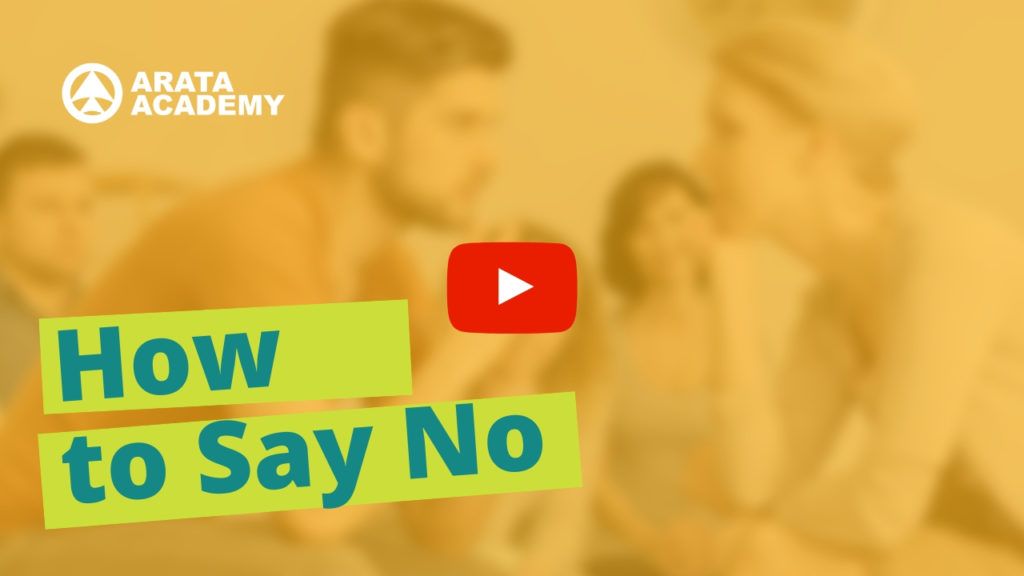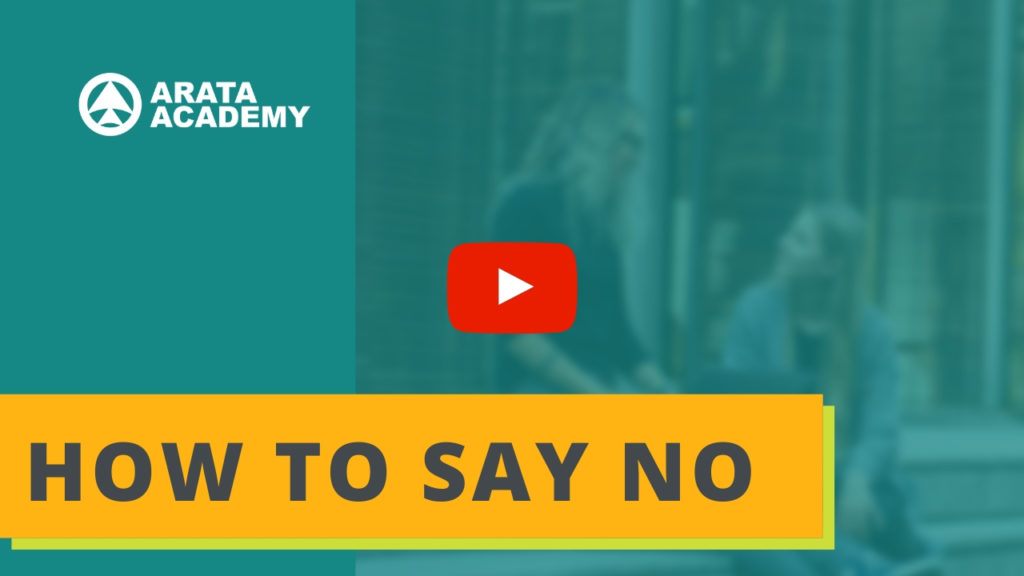Today, I’m going to share with you a very simple and useful technique that’ll help you to communicate better with those around you.
This technique focuses on improving communication with a loved one, for example someone in your family or your best friend. If you’re a little bit creative with it, it could even help enhance relationships you form with co-workers and other people.
This technique is called “REWIND THE TAPE”, it’s easy to understand and it’s a communication technique that can save relationships.
I’m Seiiti Arata, from Arata Academy and our company offers a wide selection of online training programmes. We’ve made this video free to access (you can also find it on our YouTube channel: arata.se/yteng) as a way of saying thank for supporting us. If this is your first time visiting us, feel free to register your email at www.ArataAcademy.com to be able to access even more materials.
For you to make the most of the “REWIND THE TAPE” technique, all you need is a pen and paper to make notes of anything you need. If you need to, pause the video and take time to make your notes clear and understandable.
Ready? Brilliant. The “REWIND THE TAPE” technique works just like those old cassette tape players: if you want to listen to the tape again, all you have to do is press the button to go back to the start of the tape and it’ll start again.
In this case, Rewinding the Tape means showing respect and listening intently to the other person.
A lot of miscommunication can happen when someone only hears what they want to hear, not what’s being said. That’s called selective listening.
The worst type of listening is when you’re in the middle of a conversation just waiting for your opportunity to say what’s on your mind. When you don’t listen, the focus is totally on yourself, all you want to do is talk but you don’t give your full attention to what’s being said. Yes, you’re listening, but you’re not listening to understand the other person: you’re only listening in order to find FAULTS in the other person’s argument, to prove that they’re wrong and you’re right. You’ll find that your sentences usually start with “Okay, but …” and from then on, you just keep shooting your arguments at the other person until it seems more like a debate than a conversation.
Rewind the Tape is a crucial technique in helping to improve your communication. Personally, when I go rewind the tape, I make a conscious effort to be quiet, to leave my ideas for later.
First, I make a point of showing respect by listening to what the person before me is saying. As soon as the other person finishes speaking, I repeat what I just heard to myself. I’ll listen to the tape from the start.
Write down in your notebook some ways that you could do this:
-So-and-so, thank you for explaining what you feel to me. By this you mean … (repeat what you heard)
-Oh, I think I got it. In other words, you … is that right? Please correct me if I’m wrong
-Help me understand what you said? What I understood was that …
“It’s really important to me that I understand your point clearly.” Is it okay for me to tell you what I understood? Is it true that …?”
Notice that all these sample sentences are made up of two parts. The first part shows that you genuinely want to communicate well and understand the point that the other person puts across. The second part is a repetition of what you have heard, or of what you’ve understood.
The Rewind the Tape technique will help strengthen your relationship with the person in front of you. They’ll feel even more encouraged to speak about things that they may have been holding back. When you use this technique, both you and the person you’re speaking to will come to realise that when someone shows interest in what you’re saying, you’ll end up getting everything off your chest instead of burdening yourself with it. In the most heated moments of the conversation, it’s important to remember the purpose of communicating: being respectful, taking the time to listen, and making sure you’ve understood what the other person has said.
Only then should you speak.
Before you begin to say what’s on your mind, ask what the person wants to tell you. Give them time. Only open yourself up and say what you need to when you’re sure the other person has said everything they need to say. Make sure that they’re interested in listening to your points too.
If they do want to listen and understand, put effort into expressing yourself quite clearly and then use the Rewind the Tape technique, but turn it on its head: when you finish speaking, ask the other person what they understood from what you said. Here are some examples:
-So-and-so, I have a great deal of respect for you, and I want to be sure that you understood what I said. Can you please tell me what you heard, so we can check if we’re on the same page?
-I’m not sure I chose the right words to express myself. Will you help me figure out if I can share what I think with you? What did you hear?
-Shall we check if we’re on the same page here? Tell me what you understood from this conversation
Do you see what we’re doing here? It’s the Rewind the Tape technique, but it’s the other way around. It’s the other person that’ll tell you what they understood. We do this because we don’t want to say something and have the other person think we mean another. By reversing the Rewind the Tape technique, you’ll be able to see if there’s a communication problem and then you can work on addressing it.
Before this video ends, I also want to give you two extra tips. But first, let’s review what we’ve covered so far.
– Many communication problems happen when we say one thing but the person we’re speaking to understands it in another way
– The opposite can also happen: people say something to us, but we interpret it in the wrong way
– A first step towards improving your communication skills is to pay attention and listen to what the other person is saying. Stop focusing on when it’ll be your turn to talk, focus on what’s being said to you instead
– To make sure you understood what was said, use the Rewind the Tape technique: repeat what you understood and ask if that’s what was meant – if you got the wrong end of the stick, ask for the person to reword what they said
Only after I’ve finished hearing everything the other person has to say do I ask if they’re interested in hearing what I have to say. If they do want to listen to you, tell them what you want to say and make sure to use the Rewind the Tape technique, only this time, use it backwards: ask them to tell you what they understood. Offer to rephrase what you’re saying if they can’t quite get what you mean.
I hope that with this advice, you go on to have healthy and interesting conversations, however I did promise I’d give you two extra tips.
1) Be careful when the other person says “okay, I get it”.
When you use the Rewind the Tape technique and you ask the other person to tell you what they heard, they’ll probably just lower their head and say “okay, okay, I get it.”
When this happens, you need to insist that they answer your question: “I didn’t ask you if you understood. I asked you to tell me, what you understood”
– Yes, yes, I understood what you’re saying
“What did you understand?” Tell me what you understood so that I know that I’ve got my point across clearly
You see? The Rewind the Tape technique will only work properly if the other person actually correctly repeats the message you wanted to convey.
2) Be careful not to lose your cool
If you lose your temper in the middle of a conversation, it’s hard to keep listening. It gets difficult to be heard. In this quick video, we aren’t going to get too deep into this area, but basically what you need to keep in mind is that the person in front of you doesn’t want to offend you, hurt you or to be unfair to you. They’re just communicating in the only way they know, they’re just opening up and that’s what you asked them to do. In this type of conversation, the most important thing you can do is listen.
Because of this, the last thing you want is for both of you to be hurling insults about and trying to prove who’s right or wrong.
The only thing that’ll really help the conversation to move along is to show respect by listening and trying your best to understand.
I know that you may have a few queries after watching this video, and that’s good. Asking questions allows us to reflect on what we’ve learnt, as well as using our creativity to make a change.
Let’s take it one step at a time. If you just put the Rewind the Tape technique into practice in the way I’ve advised you to do in this video, I think you’ll get great results. Please feel free to share in the comments how you used the Back to Tape technique and how it affected your communication skills.
Just by getting to the end of this video, you have proven to yourself that you’re interested in improving your communication techniques and that you really want to make a change. Arata Academy has a specific course on effective communication, which you can access at here.

